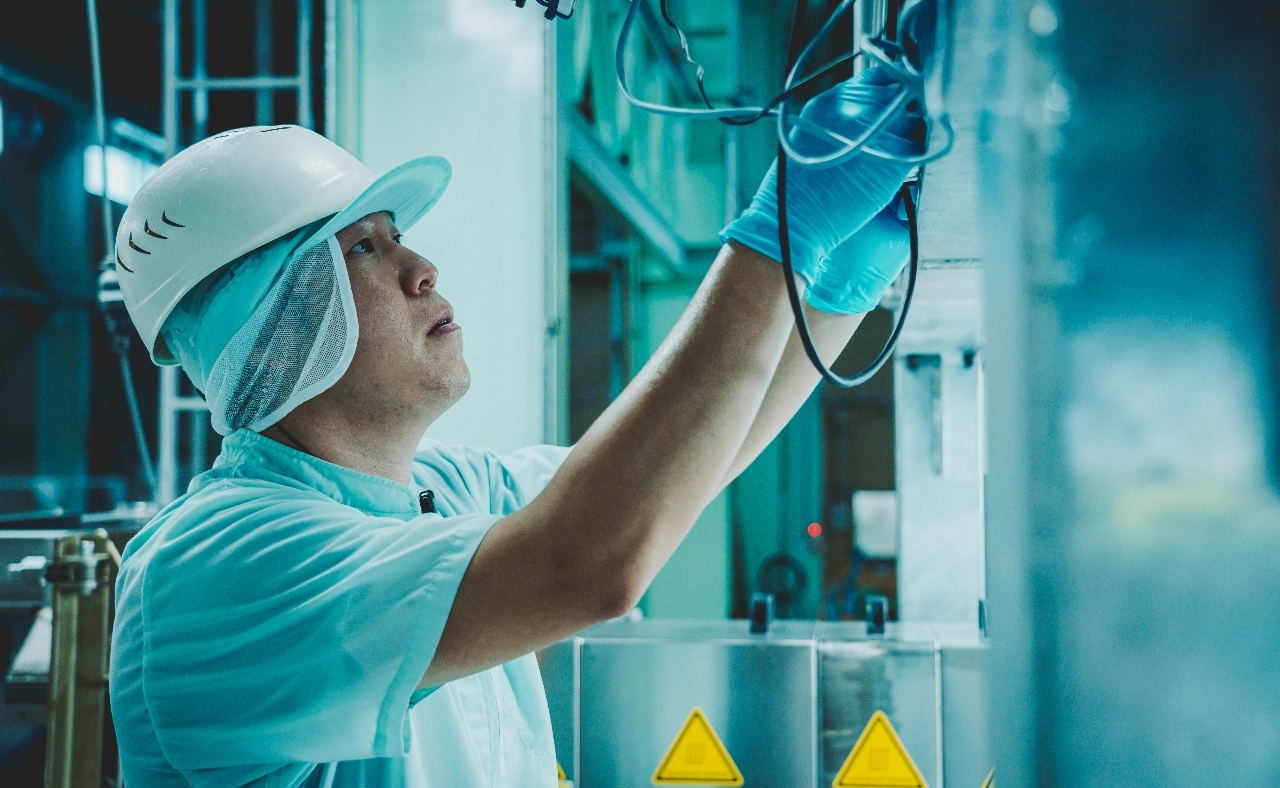A Look Into Our Partner Factories
NHP dispatches technical advisors to various partner factories that have installed NHP's hydrolysis equipment. We provide technical support.
Read More

Our new hydrolysis method
is an evolution in safer food manufacturing.

NHP’s hydrolysis technology breathes new life into materials–mainly food ingredients– by breaking down and reprocessing them into products that meet modern food production needs. As a result, we don’t overprocess or mess with our planet’s natural resources. By replacing various raw materials with our hydrolysate, we are revolutionizing food development and manufacturing, creating new possibilities for food.
1
We perform sterilization (including on spores) during the hydrolysis. By creating near-sterile conditions, we can work with foods that could not be used due to the presence of bacteria.
2
By preserving the nutritional value of the ingredients, the flavor, sweetness, and umami can be maintained in the final products.
3
Substitute for anti-aging agents like thickeners and emulsifiers
Our technology can convert insoluble materials into water-soluble products–this can change the physical properties of the material and help preserve the quality of foods, and improve texture and taste.
4
Fermentation time can be shortened, thus reducing the time required to produce brewed and fermented foods.
NHP hydrolysates have various functions and can be listed as "food ingredients" rather than "chemical additives.” As a result, they’re used in various processed foods. Rice hydrolysate is a great example. Powdered materials made from rice or glutinous rice are used in many foods because their flavors are easily blended with any food.
An alternative emulsifier
Our rice powder, created by hydrolyzing glutinous rice, has the same functionality as sugar esters, a commonly used emulsifier. Because it is hydrolyzed by high-temperature and high-pressure treatment without any chemical treatment, it can be listed as "rice flour" or "glutinous rice flour” on food labels.

An alternative thickening agent
Our hydrolyzed rice powder has the same functionality as thickening agents such as xanthan gum and guar gum and can be listed on labels as "rice flour."

An alternative to synthetic antioxidants
Our hydrolyzed rice powder can be used as an antioxidant in processed foods. Adding rice flour to raw materials helps maintain food quality by inhibiting recrystallization, which can cause the hardening of rice, bread, etc., over time.

Enhance flavor
Our technology can hydrolyze all grains, vegetables, kelp, dried bonito flakes, and other ingredients to produce powders packed with each ingredient's umami, sweetness, and aroma. This can substitute for food additives such as sugar, chemical umami seasonings (MSG), and artificial sweeteners.


*No chemical treatments are used
NHP’s original hydrolysis technology has three main components: thermal, mechanical, and enzymatic.
Hydrolysis in manufacturing edible raw materials in recent years often combines acid, thermal, and enzymatic degradation. However, NHP uses a unique technology that is chemical and acid-free. Our process breaks materials such as rice, azuki beans, and other agricultural and marine products down to the invisible molecular level. Once broken down, these elements are processed into powdered hydrolysates with multiple functionalities. Our process is fast, low-energy, and chemical free. Because the process takes place under oxygen-free and drainage-free conditions, it also offers a variety of benefits, including the preservation of nutrients and flavor.
Many of us might have learned about hydrolysis in school–it’s often described as a chemical reaction where a compound decomposes as it reacts with water. It’s been an essential part of food manufacturing for a long time. For example, traditional soy sauce and sake making involves fermentation, a reaction in which proteins and starches are slowly hydrolyzed with the help of bacteria. Hydrolysis technology has recently become more efficient and speedy by combining acid and enzymatic degradation techniques. However, these methods come with challenges–traditional approaches are time-consuming, while today's equipment for modern chemical-based hydrolysis technology is expensive.
1
Coarsely grind and
add water to the material.
2
Breakdown material at the molecular level while adding heat and pressure (sequential hydrolysis process)
3
Dry and grind into powder
NHP partners with factories from across the globe. These factories work with us to create different types of hydrolyzed products from various agricultural and marine products.

